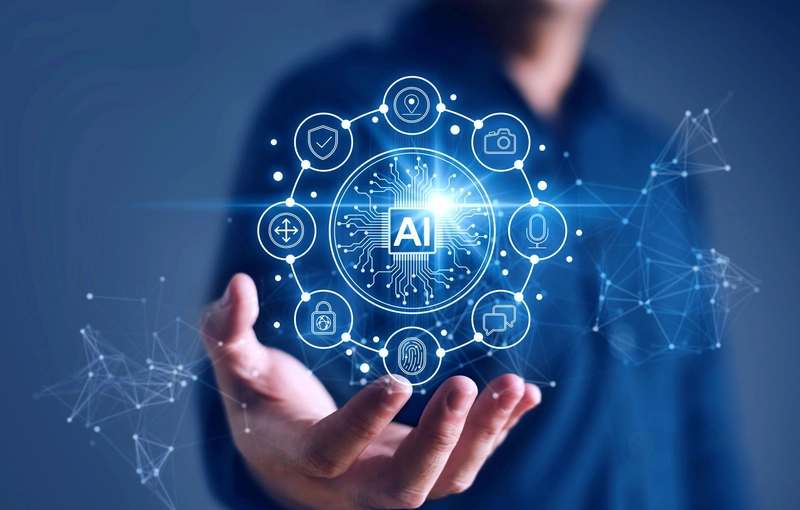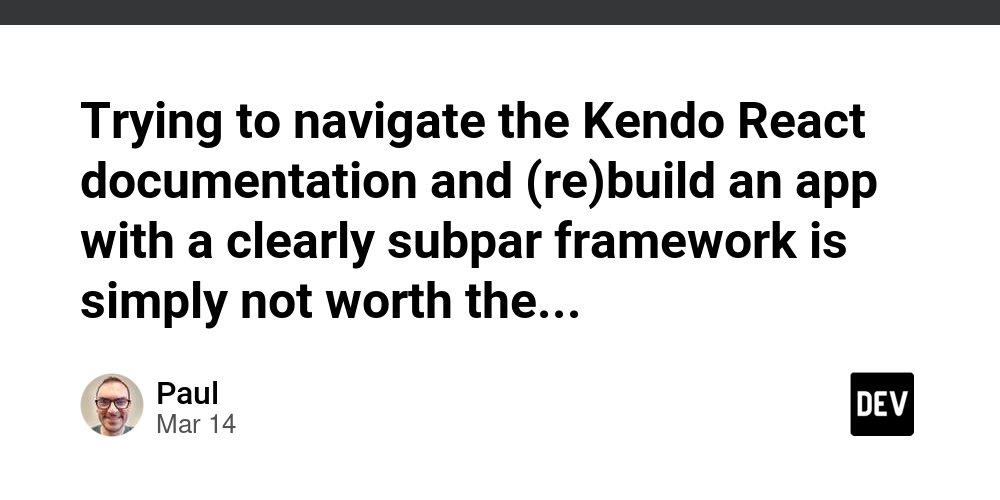From Idea to Execution: Building Your First AI Agent
Introduction The rise of intelligent automation has reshaped how businesses and individuals approach problem-solving. At the heart of this transformation are AI agents autonomous software entities capable of perceiving their environment, making decisions, and taking actions to achieve specific goals. From customer service bots to autonomous research assistants and operational process managers, AI agents are changing the game across industries. If you’re new to this field and wondering how to go from an idea to a fully functioning AI agent, this article is your step-by-step guide. Whether you're a developer, entrepreneur, or team lead, here’s how to bring your first AI agent to life. Step 1: Define the Purpose of Your AI Agent Every successful AI agent starts with a clearly defined goal. Before writing any code or choosing a framework, you need to understand: What problem is the AI agent solving? Who is the end-user? What decisions or actions will the agent take autonomously? Some popular use cases include: Customer support chatbots AI research assistants Appointment scheduling agents AI sales outreach agents Task automation for operations or HR Clarity at this stage is crucial because it guides the agent’s architecture, data sources, user interface, and performance expectations. Step 2: Choose the Right Type of AI Agent AI agents can be classified into several categories based on their complexity and autonomy level: Reactive Agents: These agents respond to stimuli without maintaining a memory (e.g., simple rule-based bots). Model-Based Agents: These agents maintain an internal model of the world and make decisions accordingly. Goal-Based Agents: These agents aim to achieve specific outcomes and evaluate different paths. Utility-Based Agents: These optimize for the best outcome based on a utility function. Learning Agents: These improve their performance over time through machine learning. For your first project, a goal-based or reactive AI agent is a good starting point especially if you're targeting task automation or simple customer interactions. Step 3: Gather and Prepare Your Data Data is the lifeblood of any AI system. For your AI agent to function intelligently, it needs access to structured or unstructured data it can use to learn from, respond to, or analyze. Depending on your use case, your data might come from: CRM or helpdesk systems Emails or chat logs Web APIs (e.g., weather, finance, traffic) Internal databases or knowledge bases Publicly available datasets Make sure the data is clean, relevant, and accessible. AI agents rely on accurate input to deliver valuable output garbage in, garbage out applies here. Step 4: Design the Agent’s Architecture This is where things get technical—but exciting. You’ll need to define: Input interfaces: How does the agent receive information? (e.g., text input, voice command, API feed) Processing logic: How does the agent make decisions? (e.g., rule engine, ML model, decision trees) Output mechanisms: How does the agent act? (e.g., text replies, API calls, task execution) For example, if you're building an AI customer service agent: Input: Chat message from user Processing: Intent classification + entity recognition Output: Contextual reply or ticket creation Modern AI agent development companies often use modular, composable frameworks like LangChain, AutoGPT, or RAG-based agents to streamline this process. Step 5: Select the Tools and Frameworks Choosing the right tools makes building AI agents faster and more scalable. Depending on your tech stack, consider: NLP & ML Libraries: OpenAI API, Hugging Face Transformers, spaCy, or scikit-learn Workflow Orchestration: LangChain, CrewAI, AutoGen, or MetaGPT Cloud Platforms: AWS, Azure, or Google Cloud for hosting, storage, and compute Databases: PostgreSQL, MongoDB Pinecone, or vector databases for embeddings Frontend: Chat UI tools like React, Streamlit, or web components For non-developers, no-code/low-code platforms like Zapier with AI integrations or Voiceflow for conversational agents are also great starting points. Step 6: Train and Integrate the Agent If your AI agent requires custom learning like classifying support tickets or generating summaries you'll need to train it. This could involve: Fine-tuning a language model Training a classifier on labeled examples Embedding knowledge bases for retrieval-augmented generation For more basic agents, you might just define a ruleset or integrate pre-trained models. Once trained, integrate the model with your application stack via APIs, SDKs, or agent orchestration tools. Step 7: Test the Agent in Real-World Scenarios AI agents need extensive testing to perform reliably. Simulate different user interactions and monitor: Response accuracy Latency and speed Error handling Edge cases or unusual queries Deploy your AI agent in a sandbox environment first. Use logs and user feedback to improve performance before a full rollout. Itera

Introduction
The rise of intelligent automation has reshaped how businesses and individuals approach problem-solving. At the heart of this transformation are AI agents autonomous software entities capable of perceiving their environment, making decisions, and taking actions to achieve specific goals. From customer service bots to autonomous research assistants and operational process managers, AI agents are changing the game across industries.
If you’re new to this field and wondering how to go from an idea to a fully functioning AI agent, this article is your step-by-step guide. Whether you're a developer, entrepreneur, or team lead, here’s how to bring your first AI agent to life.
Step 1: Define the Purpose of Your AI Agent
Every successful AI agent starts with a clearly defined goal. Before writing any code or choosing a framework, you need to understand:
What problem is the AI agent solving?
Who is the end-user?
What decisions or actions will the agent take autonomously?
Some popular use cases include:
Customer support chatbots
AI research assistants
Appointment scheduling agents
AI sales outreach agents
Task automation for operations or HR
Clarity at this stage is crucial because it guides the agent’s architecture, data sources, user interface, and performance expectations.
Step 2: Choose the Right Type of AI Agent
AI agents can be classified into several categories based on their complexity and autonomy level:
Reactive Agents: These agents respond to stimuli without maintaining a memory (e.g., simple rule-based bots).
Model-Based Agents: These agents maintain an internal model of the world and make decisions accordingly.
Goal-Based Agents: These agents aim to achieve specific outcomes and evaluate different paths.
Utility-Based Agents: These optimize for the best outcome based on a utility function.
Learning Agents: These improve their performance over time through machine learning.
For your first project, a goal-based or reactive AI agent is a good starting point especially if you're targeting task automation or simple customer interactions.
Step 3: Gather and Prepare Your Data
Data is the lifeblood of any AI system. For your AI agent to function intelligently, it needs access to structured or unstructured data it can use to learn from, respond to, or analyze.
Depending on your use case, your data might come from:
CRM or helpdesk systems
Emails or chat logs
Web APIs (e.g., weather, finance, traffic)
Internal databases or knowledge bases
Publicly available datasets
Make sure the data is clean, relevant, and accessible. AI agents rely on accurate input to deliver valuable output garbage in, garbage out applies here.
Step 4: Design the Agent’s Architecture
This is where things get technical—but exciting. You’ll need to define:
Input interfaces: How does the agent receive information? (e.g., text input, voice command, API feed)
Processing logic: How does the agent make decisions? (e.g., rule engine, ML model, decision trees)
Output mechanisms: How does the agent act? (e.g., text replies, API calls, task execution)
For example, if you're building an AI customer service agent:
Input: Chat message from user
Processing: Intent classification + entity recognition
Output: Contextual reply or ticket creation
Modern AI agent development companies often use modular, composable frameworks like LangChain, AutoGPT, or RAG-based agents to streamline this process.
Step 5: Select the Tools and Frameworks
Choosing the right tools makes building AI agents faster and more scalable. Depending on your tech stack, consider:
NLP & ML Libraries: OpenAI API, Hugging Face Transformers, spaCy, or scikit-learn
Workflow Orchestration: LangChain, CrewAI, AutoGen, or MetaGPT
Cloud Platforms: AWS, Azure, or Google Cloud for hosting, storage, and compute
Databases: PostgreSQL, MongoDB Pinecone, or vector databases for embeddings
Frontend: Chat UI tools like React, Streamlit, or web components
For non-developers, no-code/low-code platforms like Zapier with AI integrations or Voiceflow for conversational agents are also great starting points.
Step 6: Train and Integrate the Agent
If your AI agent requires custom learning like classifying support tickets or generating summaries you'll need to train it. This could involve:
Fine-tuning a language model
Training a classifier on labeled examples
Embedding knowledge bases for retrieval-augmented generation
For more basic agents, you might just define a ruleset or integrate pre-trained models. Once trained, integrate the model with your application stack via APIs, SDKs, or agent orchestration tools.
Step 7: Test the Agent in Real-World Scenarios
AI agents need extensive testing to perform reliably. Simulate different user interactions and monitor:
Response accuracy
Latency and speed
Error handling
Edge cases or unusual queries
Deploy your AI agent in a sandbox environment first. Use logs and user feedback to improve performance before a full rollout. Iteration is key especially for learning agents that evolve with usage.
Step 8: Launch and Monitor in Production
Once you're confident, deploy your AI agent in production but keep a close eye on it. You'll want to:
Track user engagement
Identify breakdowns or unanswered queries
Monitor system performance
Collect ongoing feedback for improvement
Use analytics and observability tools to fine-tune your AI agent’s behavior over time. If your agent performs critical tasks (e.g., financial recommendations, healthcare queries), ensure you include safety nets and human-in-the-loop mechanisms.
Conclusion
Building your first AI agent is a rewarding journey that combines creativity, strategy, and technology. From ideation and data preparation to architecture design and deployment, each step plays a vital role in ensuring your AI agent is intelligent, responsive, and effective.
Whether you're automating repetitive tasks, enhancing customer support, or creating something entirely new, AI agents can drastically improve efficiency and scalability. And if you're looking to accelerate development, partnering with a seasoned AI agent development company can help turn your vision into a working solution quickly and effectively.
The future of work is agent-driven and it starts with your first build. So go ahead, take that idea and turn it into an autonomous, value-generating AI agent. The tools, the tech, and the opportunity are all here.









































































































































































![[The AI Show Episode 144]: ChatGPT’s New Memory, Shopify CEO’s Leaked “AI First” Memo, Google Cloud Next Releases, o3 and o4-mini Coming Soon & Llama 4’s Rocky Launch](https://www.marketingaiinstitute.com/hubfs/ep%20144%20cover.png)




























































































































![[DEALS] The All-in-One Microsoft Office Pro 2019 for Windows: Lifetime License + Windows 11 Pro Bundle (89% off) & Other Deals Up To 98% Off](https://www.javacodegeeks.com/wp-content/uploads/2012/12/jcg-logo.jpg)



























![Is this too much for a modular monolith system? [closed]](https://i.sstatic.net/pYL1nsfg.png)






















































































































_Andreas_Prott_Alamy.jpg?width=1280&auto=webp&quality=80&disable=upscale#)
































































































![What features do you get with Gemini Advanced? [April 2025]](https://i0.wp.com/9to5google.com/wp-content/uploads/sites/4/2024/02/gemini-advanced-cover.jpg?resize=1200%2C628&quality=82&strip=all&ssl=1)













![Apple Shares Official Trailer for 'Long Way Home' Starring Ewan McGregor and Charley Boorman [Video]](https://www.iclarified.com/images/news/97069/97069/97069-640.jpg)
![Apple Watch Series 10 Back On Sale for $299! [Lowest Price Ever]](https://www.iclarified.com/images/news/96657/96657/96657-640.jpg)
![EU Postpones Apple App Store Fines Amid Tariff Negotiations [Report]](https://www.iclarified.com/images/news/97068/97068/97068-640.jpg)
![Apple Slips to Fifth in China's Smartphone Market with 9% Decline [Report]](https://www.iclarified.com/images/news/97065/97065/97065-640.jpg)




































































































































